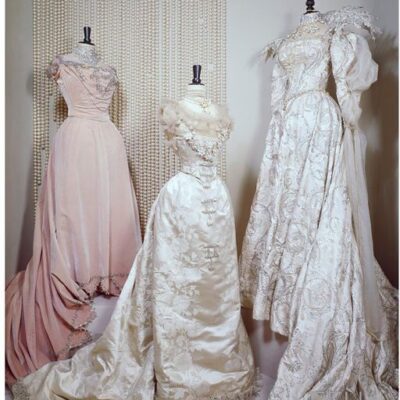
Fashion & History 19.12.2022
31.03.2019
costume historyeuropean costumeEuropean fashion
The traditional Georgian costume belonging to an extraordinary Georgian man
The image shows a Chokha, a national Georgian item of clothing. This item belonged to Chabua Amirejibi, a Georgian novelist and Soviet-era dissident author of the popular book Data Tutashkhia, a story of a Georgian outlaw of the Imperial Russia period.
The Chokha is a wool coat, charactertised by rows of cartridge holders on the chest. Originally, these cartridge holders were basic folds, useful to hold bullets and gunpowder. When the firearms were replaced, the practical value of the bullet holders was lost, but it still remains a fundamental trait of the Chokha and its history.
The current form of Chokha was developed in the late Middle Ages.
The complete Chokha outfit also includes a khanjali (the sword), akhalukhi (a shirt worn underneath the chokha), masrebi (the bullets), and kabalakhi (a hood, separate from the robe) or nabdis kudi (a tall fur hat).
According to the area in which it was worn, Chokha varies, There are in fact four types of Chokha: Kartl-Kakhetian Chokha, Khevsuretian Chokha, Adjarian Chokha, also called Chakura, and General Caucasian Chokha, which resembles Kartl-Kakhetian Chokha but it is slightly longer.
As it is known, Chokha was a part of the traditional man’s wear in peoples of the Caucasus and in Georgia as well. Chokha is therefore a men’s attire; however, in some parts of the Caucasus there are also women wearing Chokhas.
Chokha is still used in Georgia as a symbol of national pride, and is frequently worn by Georgian men at special occasions. It is still considered a symbol of pride and national identity.